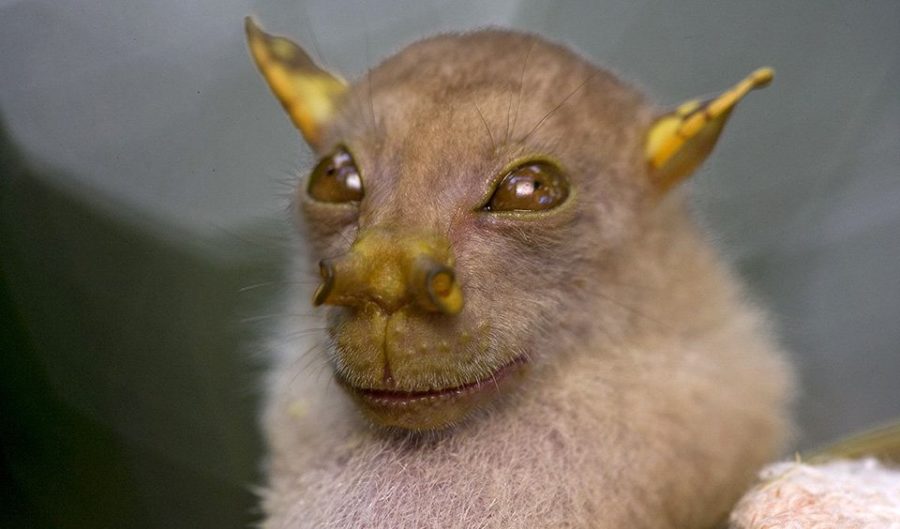Cute it is, this Yoda bat

Bec Crew
Bec Crew

LOOK AT HIM, he’s so wise. If any fruit bat has found a higher purpose in this life, it’s this guy right here with his proud, fuzzy chest, golden ears, and beady amber eyes. He knows things.
Meet the Yoda bat, an unclassified species from the Nyctimene genus of large, tube-nosed bats spread throughout the Philippines, Indonesia, Papua New Guinea, NSW and Queensland.
Named for its resemblance to a certain Jedi master with equally smiley eyes, the Yoda bat came into the public consciousness when it was discovered as part of an extensive conservation expedition into the country’s remote bushland between 1990 and 2009.
Nancy Irwin was the scientist who officially identified the bat as a new species.
“I discovered this bat in 1999 with genetic data and extensive field observations, and was asked to identify bats from a Conservation International survey. I was able to confirm it was the new species I was working on revising. It was released as a new species and became the internet sensation with the name of Yoda bat.”
It’s formal name Nyctimene wrightae, sp. nov. is named after the conservationist Dr. Deb Wright. who devoted 20 years to build conservation programs and long term scientific capacity in Papua New Guinea .
Yoda bat among huge find of new species
During the last year of the expedition, researchers from environmental organisation Conservation International and Papua New Guinea’s Institute for Biological Research spent two months in the dense and little-explored Nakanai and Muller mountain ranges, and came out of it with a raft of new species, including two mammals, 24 frog species, nine plants, 100 spiders, and almost 100 insects.
Highlights – not including the best-looking bat in the world in that picture up there – were a 7m-tall carnivorous plant; a freshwater fish with vampire fangs; a mouse with a half, white, half black tail; and a katydid with candy pink eyes.
“This rate of discovery is simply staggering in modern times,” Stuart Chapman from WWF Greater Mekong, said at the time. “Each year, the new species count keeps going up, and with it, so too does the responsibility to ensure this region’s unique biodiversity is conserved.”
It’s hoped that the discovery will strengthen the case for both the Nakanai and Muller mountain ranges to be included on UNESCO’s World Heritage List. It’s been on the ‘tentative’ list since 2006.
Home to more than 90 known species, PNG harbours almost 9 per cent of the world’s bats, and they make up almost 40 per cent of the country’s mammal fauna, according to The Journal of Mammology. While it’s certainly not the only bat in PNG, there’s no doubt it’s the most handsome species ever to have been discovered on the island nation. And he knows it.

(Image Credit: Deb Wright)

